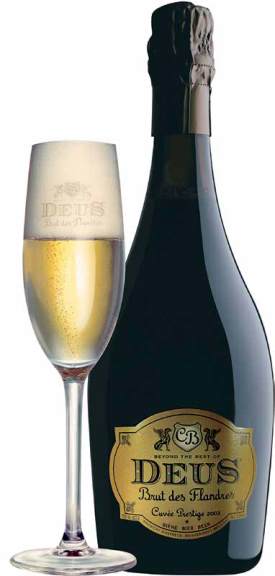Basic HTML Version

dominate the nose with fruity undertones of pear, sweet apple, and
lemon zest. DeuS has a honey-covered biscuit flavor with a dry finish
and powerful carbonation that compliments its slight alcohol warmth.
Usually, high alcohol beers like these can be kept for a few
years to develop their flavors. Aging DeuS will mellow out some
of the spiciness and develop a deeper fruit character. It is always
a matter of opinion, though I personally don’t recommend aging
bière bruts, as their spiciness helps enhance their powerful yet light
edge. Allowing that character to mellow would remove some of
the beer’s sparkle.
LETTING BEER GO
C
ellared beer is an unforgettable experience that can be
achieved by anyone willing to
wait years for the beer to mature.
Admittedly, the vast majority of beer
is not meant to age. Stale beer is
most associated with the compound
trans-2-nonenal, known for its wet-
paper aroma. While this particular
smell is unsavory, some oxidative
compounds can give the beer a
more complex, intriguing flavor,
developing sherry notes and a fruit
character that is unachievable through
normal fermentation.
How the beer is stored will
determine how the flavors develop as the
beer ages. Improper storage will produce
off flavors in beer in an unimaginably
quick time. Direct sunlight can cause a
skunky flavor in beer in less than a minute.
Beer is best kept in a cool, dark space. It
should be stored at cellar temperatures, or
below, somewhere between 45-55 degrees
Fahrenheit. Unlike wine, beer is meant to
be aged upright. The cork does not work favorably with the flavor of
beer and should not be in contact with the liquid.
Strong beers like barleywines and Belgian ales are the most
commonly aged beers. As you explore high end beer bars, their cellars
will contain a trove of aged oddities such as a ‘99 JW Lees Harvest Ale,
a strong English brew that is commonly aged for a decade or more.
Upon drinking this 15-year-old beer, one notices that its spicy, earthen
hop character left a long time ago. What remains is a strong
ale with honey nectar and juicy plum flavors accenting
a warming brandy character. Many beer enthusiasts will
travel across country or even the world to seek out these
rarities, always hunting for the next dusty bottle hidden
in the cellar of a bar.
The higher alcohol content in strong ales make
them more resistant to the oxidation reactions than stale
beer. There are a few exceptions, however, as a general
guideline a beer should have at least seven-percent ABV
(alcohol by volume) if it is going to be aged. One of
the exceptions is if the beer contains live yeast. In the
bottle, these active microorganisms will consume
oxygen and other compounds that stale the flavor
of beer. Brettanomyces and other microorganisms
that accompany wildly fermented brews like
lambic are slow-acting and can allow the beer
to be aged for decades.
THE WILD SIDE
OF BEER
I
n a regular brewery, the brewer goes
through painstaking efforts to ensure
that only the intended yeast is in the
beer. Any other yeast or microorganism
is considered wild and can result in an
infected beer. Enter lambic.
While normal brewers are trying to
winter
|
spr ing
131
RARE
BEERS

